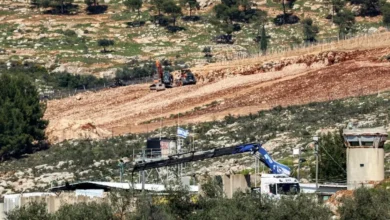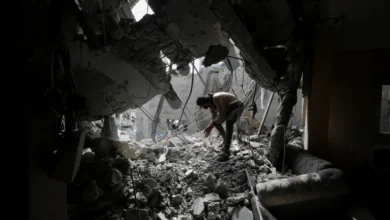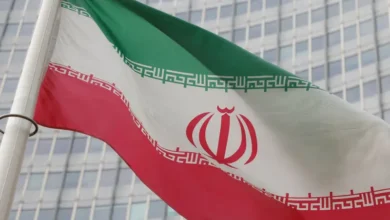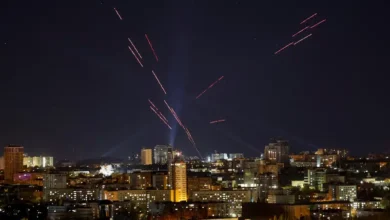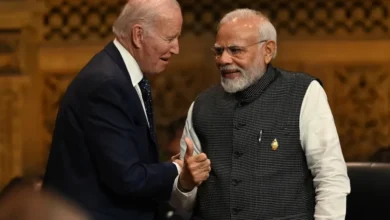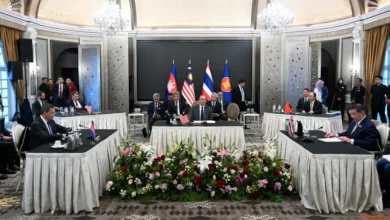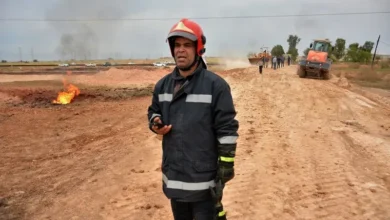Ukraine wins bipartisan US support, strikes Russia from afar
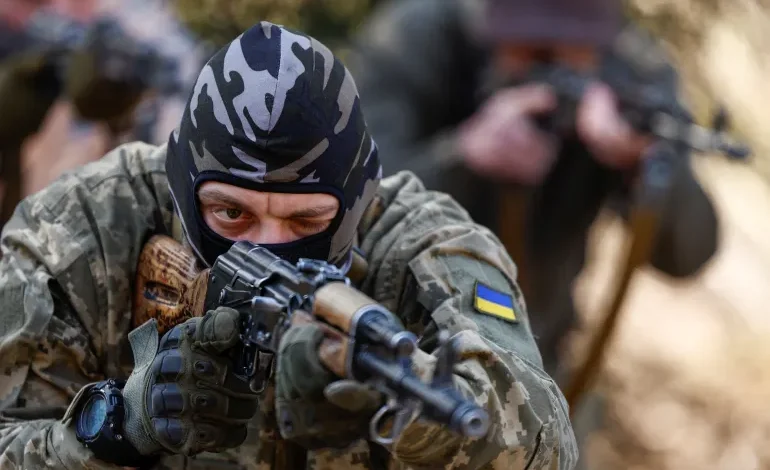
After half a year of delays and debates, the US Congress has approved a $60.8bn military aid package for Ukraine, lifting the spirits of Kyiv’s forces this week as special operations destroyed Russian air defences, a long-range bomber, a unique ship, and oil refineries.
For weeks, everyday Ukrainians have watched their cities bombarded and power stations incinerated because of a lack of anti-missile defences. Overall, Ukraine has acquired a renewed sense of hope for the longer term, even as a minority believe their occupied lands can be entirely liberated.
Meanwhile, Russian forces continued to make small tactical gains in Ukraine’s east, clawing away fields and villages west of Avdiivka, but failing to make headway in the strategic town of Chasiv Yar.
The United States House of Representatives overrode months of resistance from Republicans allied with presidential hopeful Donald Trump on Saturday to vote for a $95bn defence supplement.
One hundred and one Republicans sided with all 210 Democrats to deliver a majority of 311, versus 112 Republicans who voted against. The bill cleared the Senate on Tuesday, April 23 with an overwhelming majority of 79, including 31 Republicans.
The bipartisanship was important, demonstrating that Washington was not deadlocked on a matter of national security, nor in thrall to Trump or Russian narratives.
“It’s a dangerous time. Three of our primary adversaries, Russia and Iran and China are working together … their advance threatens the free world and it demands American leadership,” said US House Speaker Mike Johnson, who has been the target of intense criticism this year for not moving on a vote sooner.
US President Joe Biden requested the aid last October; Ukrainian troops have struggled to defend their airspace and hold their front line in the face of severe shortages of air defence missiles and artillery rounds.
“The impact [or Russian strikes] on the electricity system of Ukraine is very high,” EU foreign policy chief Josep Borrell said on Monday. “I cannot give you a precise figure because it is very appalling … It is one of the most important targets of the Russian attack. You know why: because electricity is needed for everything and for everybody.”
“Today we received the decision we were expecting: the package of American support. For which we fought so much. A very important package, which will be felt by our soldiers on the front lines, our cities and villages that suffer from Russian terror,” said Ukrainian President Volodymyr Zelenskyy in a statement.
One of the most important aspects of the new defence aid package is that it will for the first time include Army Tactical Missile Systems (ATACMS) with a range of 300km (186 miles). Ukraine has been requesting ATACMS for over a year.
Zelenskyy confirmed the news after speaking with Biden on Monday.
US Senate Intelligence Committee chairman Senator Mark Warner told CBS News that the missiles would be on their way to Ukraine “by the end of the week”. The new ATACMs put virtually all of Crimea within Ukraine’s striking range.
Zelenskyy also said the first US aid package since House approval of a supplemental spending package “will strengthen our anti-aircraft, long-range and artillery capabilities”.
Ukraine’s capabilities beyond a range of 150km (93 miles) have mostly been confined to slow-flying, easily intercepted drones of its own manufacture.
Russian reactions ranged from the cynical to the vitriolic.
“Due to political strife inside Washington, they are looking for different modalities to continue providing aid to Ukraine,” said Kremlin spokesman Dmitry Peskov. “It is about provoking Ukraine into further hostilities down to the last Ukrainian, putting guaranteed money in the pockets of the US.”
Peskov was referring to the fact that of the $60.84bn allocated to Ukraine, $23bn was to replenish US stocks already drawn down for shipment to Ukraine.
Dmitry Medvedev, the deputy head of the Russian National Security Council and a close confidant of President Vladimir Putin, called it “a vote of joyful US b*******” on Telegram.
“I can’t help but wish the USA with all sincerity to dive into a new civil war themselves as quickly as possible,” Medvedev wrote. “Which, I hope, will be very different from the war between North and South in the 19th century and will be waged using aircraft, tanks, artillery, MLRS, all types of missiles and other weapons. And which will finally lead to the inglorious collapse of the vile evil empire of the 21st century – the United States of America.”
Russia’s foreign ministry spokesperson Maria Zakharova portrayed the vote as an attempt to bolster Biden ahead of the November presidential election.
“The agony of Zelenskyy and his inner circle is being dragged out, and ordinary Ukrainians are being forcibly driven to slaughter as cannon fodder,” she said in a statement. “Frenzied attempts to save Zelenskyy’s neo-Nazi regime are doomed.”
Her boss, Russian Foreign Minister Sergey Lavrov, told Sputnik News that Russia is not willing to engage in peace talks with Zelenskyy, and if talks were to take place, Russia would not agree to a ceasefire.
On April 16, independent reporters posted geolocated footage showing plumes of smoke rising from the Dzhankoy airfield in occupied Crimea. It wasn’t clear what had been struck or who had done it, but details emerged over several days of a highly successful Ukrainian remote operation.
The following day, images were posted of destroyed S-400 air defence missile launchers, and Zelenskyy confirmed the successful strike. On Thursday, Ukrainian commander-in-chief Oleksandr Syrskii posted nocturnal video of Ukrainian missiles striking the airbase, destroying what he said were four S-400 missile launchers, a missile control centre, three radars and airspace surveillance equipment.
“We’re doing everything possible to return to Crimea,” he said.
Ukraine has made a practice of striking Crimean military targets ever since it received ATACMs from the US, followed by Storm Shadow/SCALP missiles from France and the United Kingdom last year. With ranges of 80km (50 miles) and 150km (93 miles) respectively, they are the longest-range missiles Ukraine possesses.
The strategy is to make Crimea untenable for the Russian armed forces and all the evidence has shown that it is working. Russia has pulled back to Russian soil Sukhoi Su-34 and Sukhoi Su-35 aircraft that were based in Crimea until September 2022.
On Thursday, the UK’s defence ministry published satellite photos showing a Grigorovich-class guided missile frigate being loaded with missiles at Novorossiysk port. The port had previously lacked the infrastructure for vertical loading of such missiles, the UK said, meaning this was done exclusively at the Black Sea Fleet base at Sevastopol in Crimea. It provided further evidence of the redeployment of the fleet from Sevastopol after repeated strikes there.
Zelenskyy said Ukrainian intelligence indicated Russia was moving its Kalibr missile-equipped ships from the Black Sea to the Caspian Sea after repeated Ukrainian strikes.
Ukraine has followed a similar strategy at sea, striking Russian ships with naval surface drones. On Sunday, Ukraine’s special forces said they had damaged the Kommuna, the world’s oldest active military vessel, in service since 1915.

